Botswana Wildlife Spectacular Photography Tour Report 2019
1 January 2020

















































A male Red-headed Weaver building it’s nest (Image by Wim Vorster)

Yawning hippos are always a highlight of the Moremi swamps (Image by Wim Vorster)

Young elephant bulls playing in the Khwai River (Image by Wim Vorster)

A Black-winged stilt on the move in Khwai (Image by Wim Vorster)

Elephant bull standing in Khwai River (Image by Wim Vorster)

A Nile Crocodile at a hippo carcass in Chobe (Image by Wim Vorster)
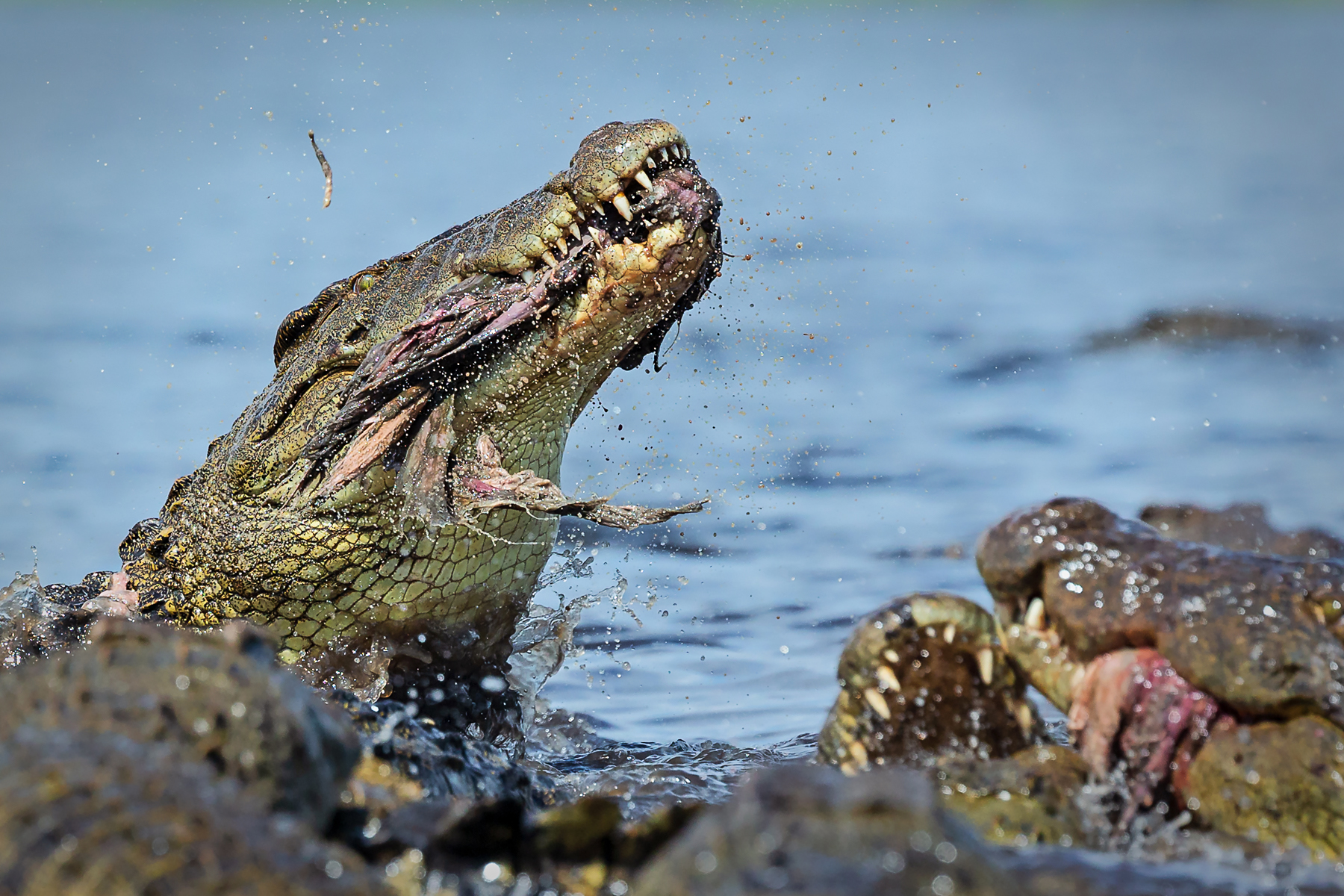
A Nile Crocodiles feeds from a dead hippo in the water in Chobe (Image by Wim Vorster)

A Blue Wildebeest crosses the vast open plains of the Savute marsh (Image by Wim Vorster)

Portrait of a male leopard resting in the late afternoon (Image by Wim Vorster)
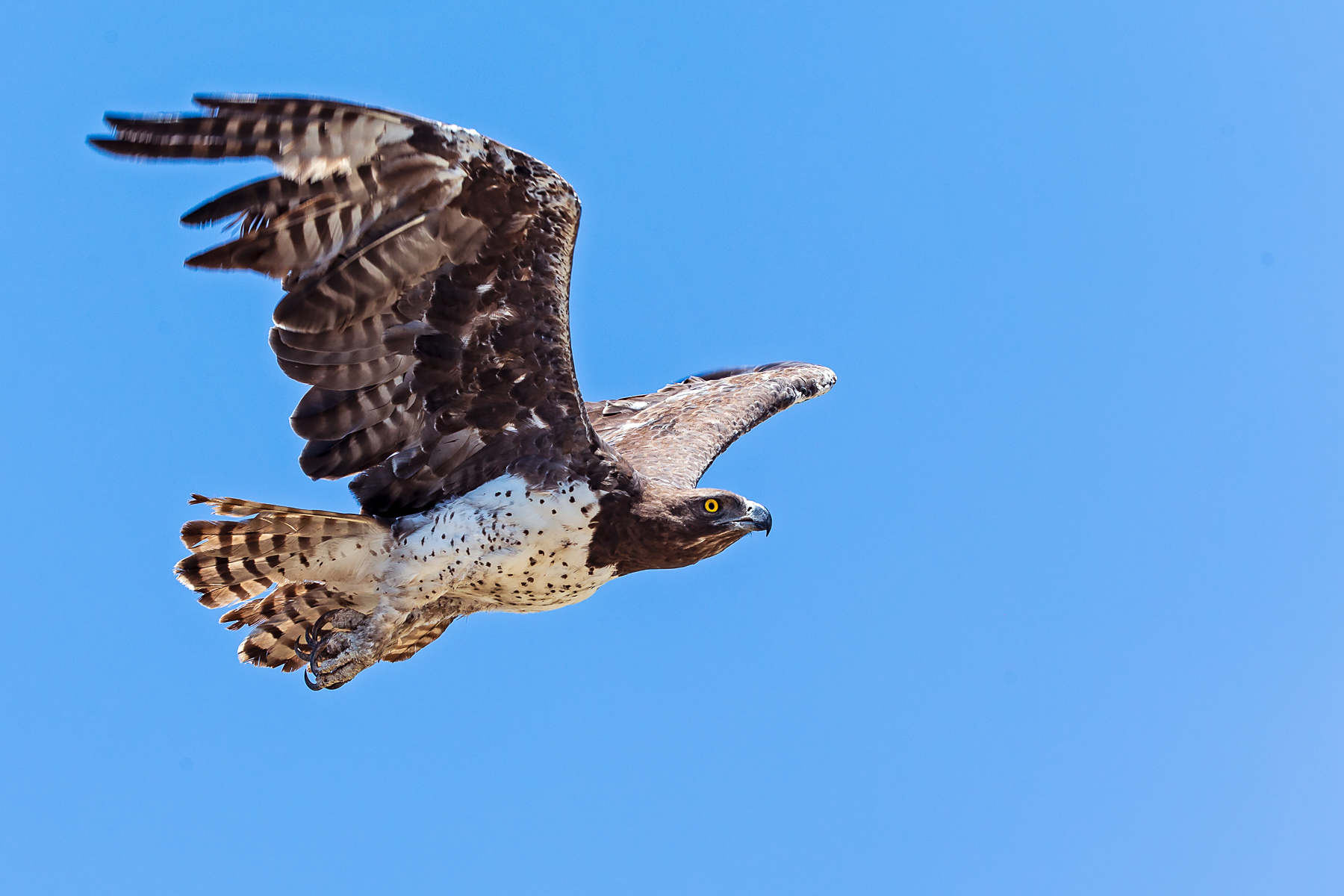
Martial Eagle in flight in the skies over Moremi (Image by Wim Vorster)

A Kori Bustard pants in the heat of Botswana (Image by Wim Vorster)

A beautiful Crested Francolin walking through the yellow flowers of a Devil’s thorn creeper (Image by Wim Vorster)

A pretty male Pygmy Goose swims through the lily flowers of Moremi (Image by Wim Vorster)
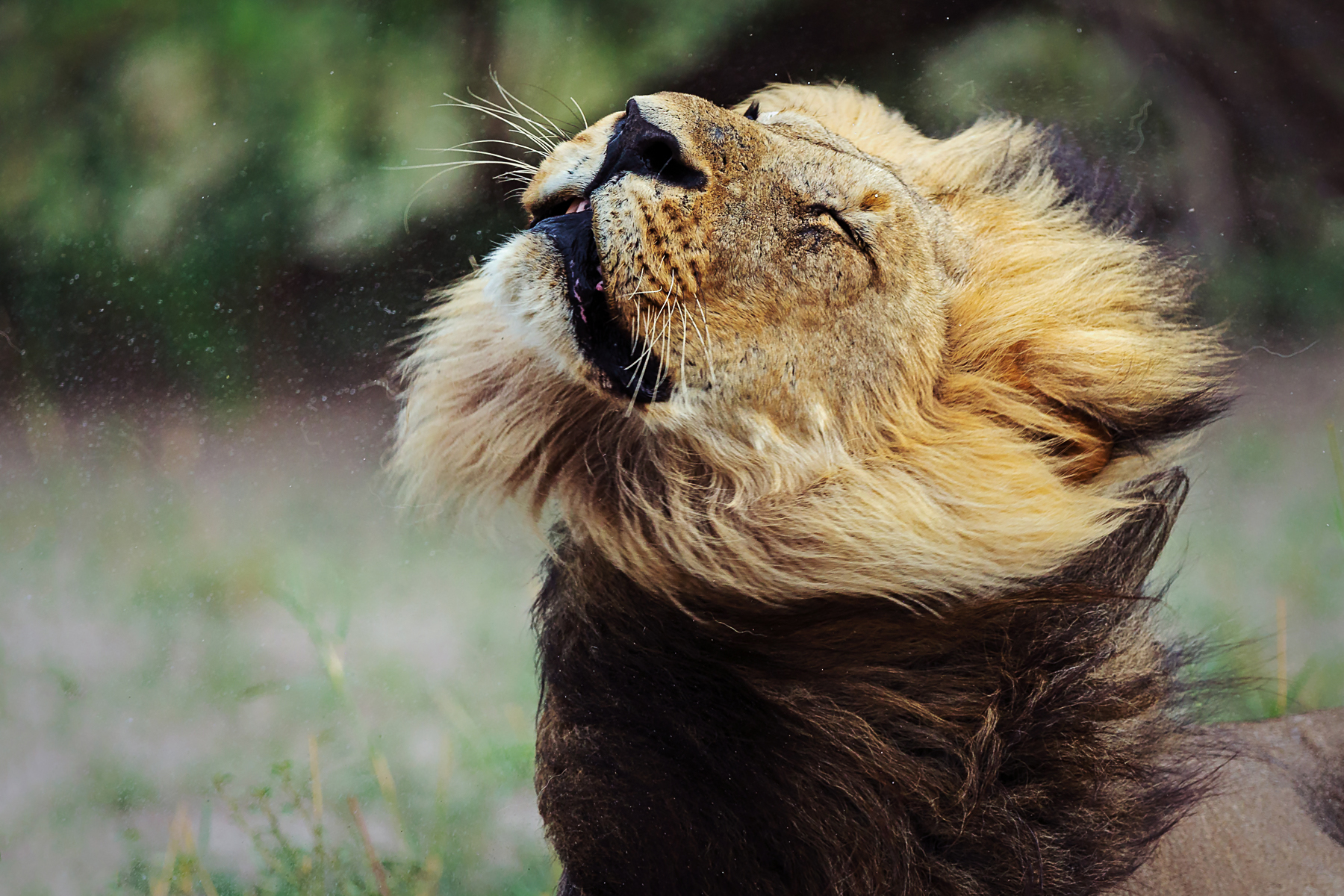
Male lion shaking his head (Image by Wim Vorster)

A Red-crested Korhaan perches on a log in Savute (Image by Wim Vorster)

Plains zebra, with elephant bull, gathering at a Savute waterhole (Image by Wim Vorster)
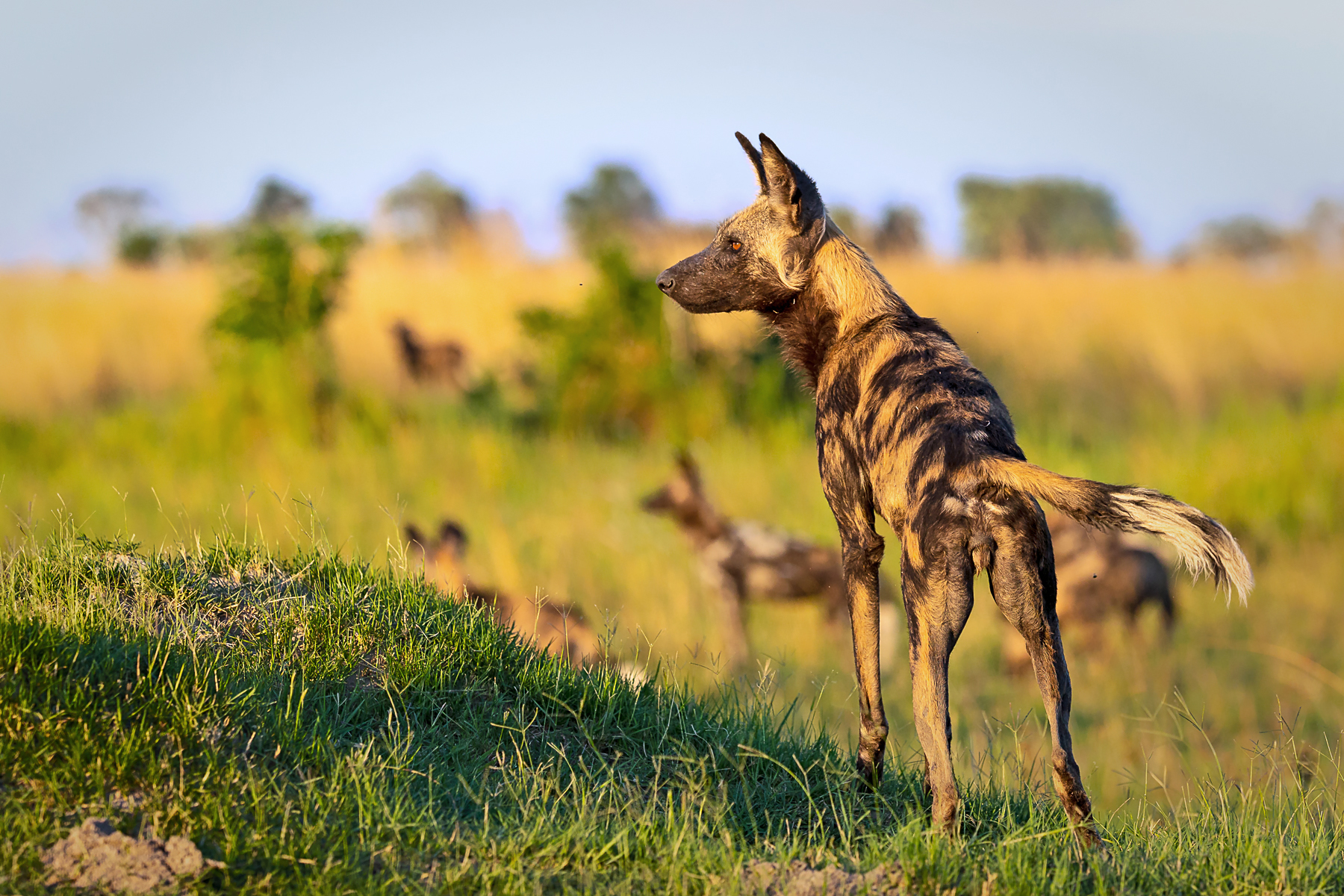
African Wild dogs on the look out in Moremi (Image by Wim Vorster)

A Slaty Egret hunts in the shallows of Moremi (Image by Wim Vorster)

Little bee-eater with dragonfly kill (Image by Wim Vorster)

A pretty Rufous-naped Lark comes in to land on top of a termite mound in Savute (Image by Wim Vorster)
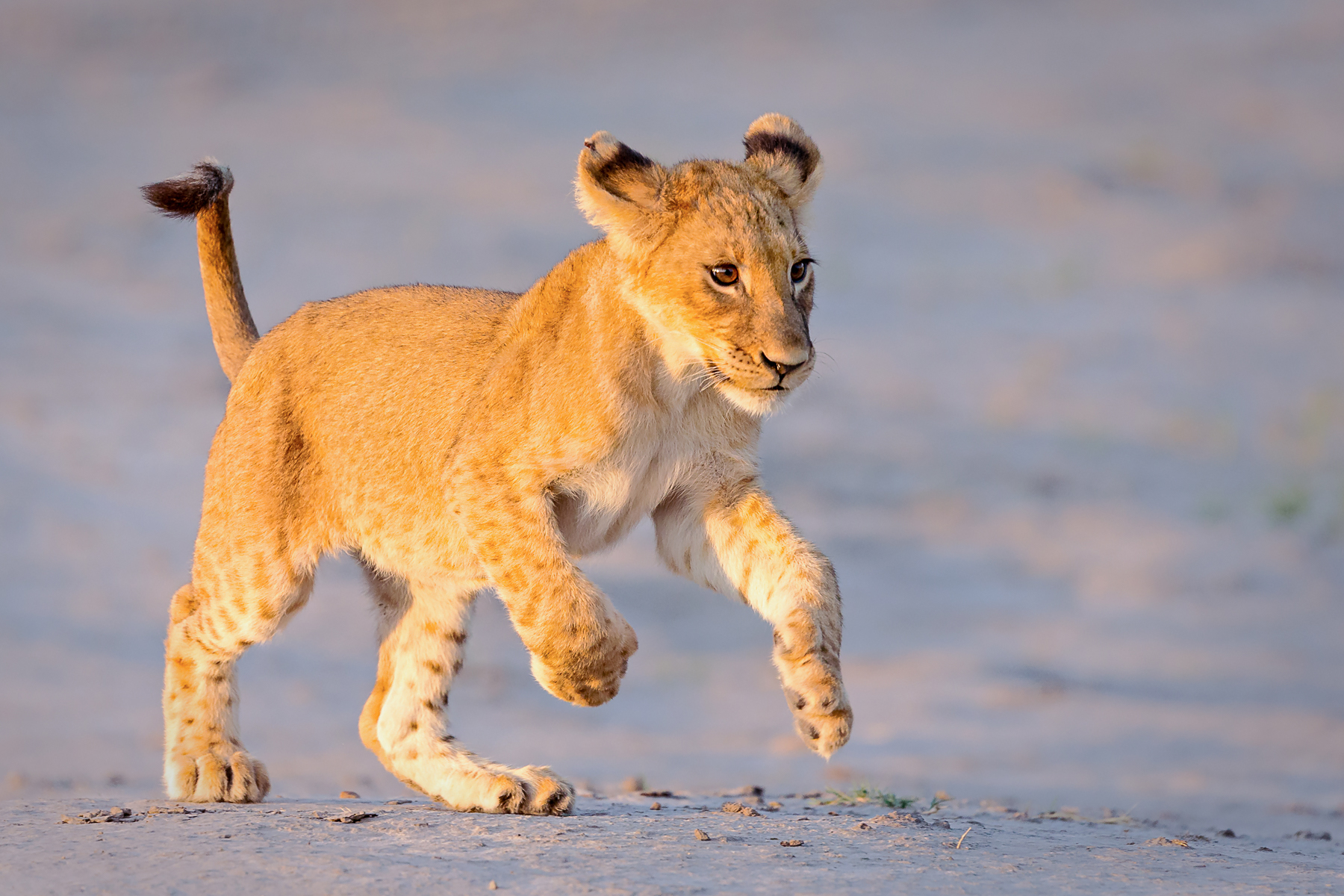
A cute little lion cub plays in Savute (Image by Wim Vorster)

A pod of hippos feeding on new green grass on the Chobe river bank (Image by Wim Vorster)

Beautiful Carmine Bee-eaters are a much longed for photography subject in Botswana (Image by Wim Vorster)

Dainty Black-winged Stilts forage as gently and silently as they can for food (Image by Wim Vorster)

A silhouette of a mother baboon with her baby on her back (Image by Wim Vorster)

Elephant bull swimming in Khwai River (Image by Wim Vorster)

A sweet little new born elephant calf following it’s mother in Chobe (Image by Wim Vorster)

A herd of Red Lechwe in the extensive wetlands of Moremi (Image by Wim Vorster)

A Green-backed heron watching the water intently looking for lunch (Image by Wim Vorster)

Red-billed buffalo weaver building it’s nest with sticks (Image by Wim Vorster)
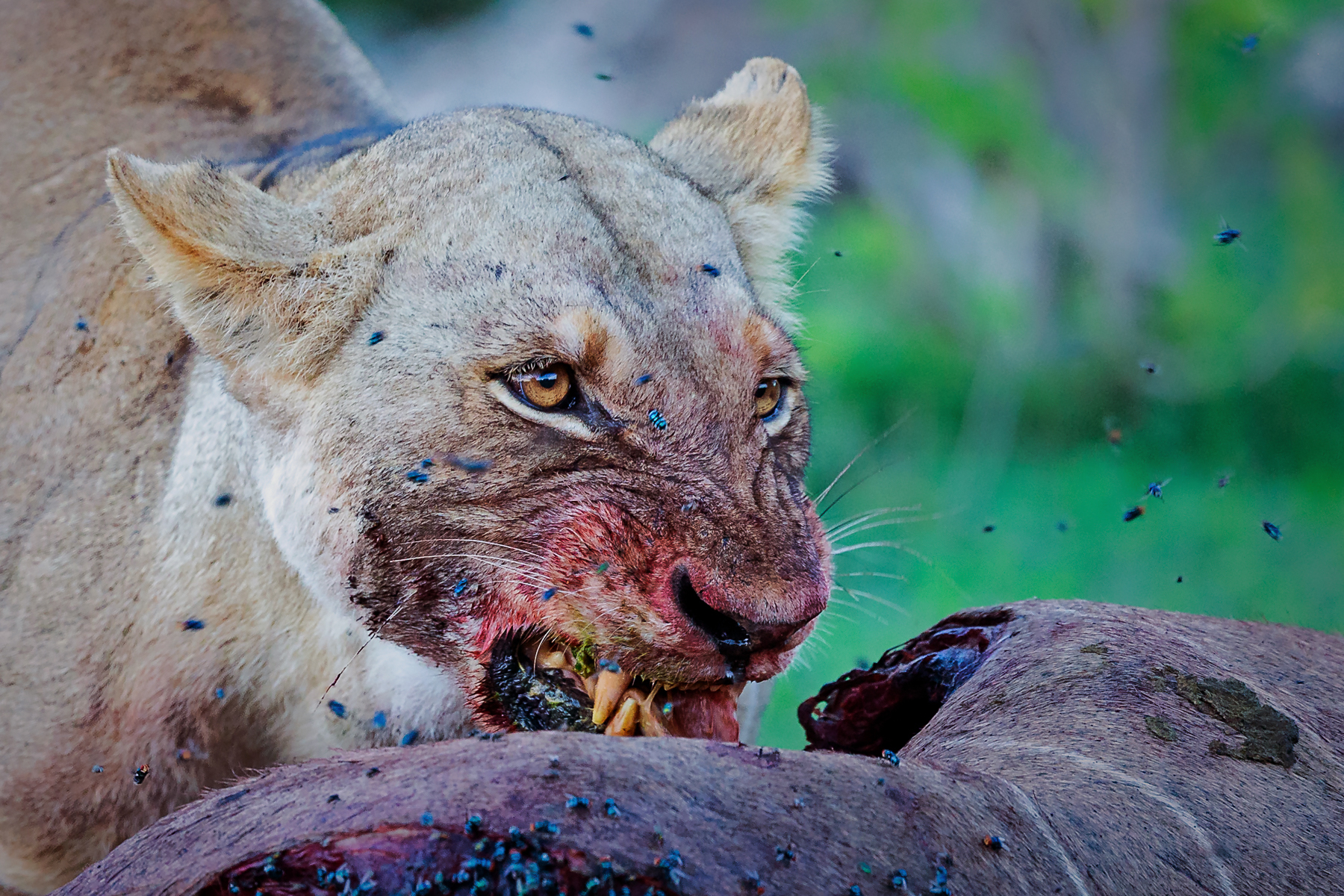
Lioness feeding on her kudu kill in Chobe (Image by Wim Vorster)

A Yellow-billed kite feeds on a strip of buffalo skin in Khwai (Image by Wim Vorster)

Elephant mud bathing in Chobe National Park, Botswana (Image by Wim Vorster)

In the eye of the crocodile! (Image by Wim Vorster)
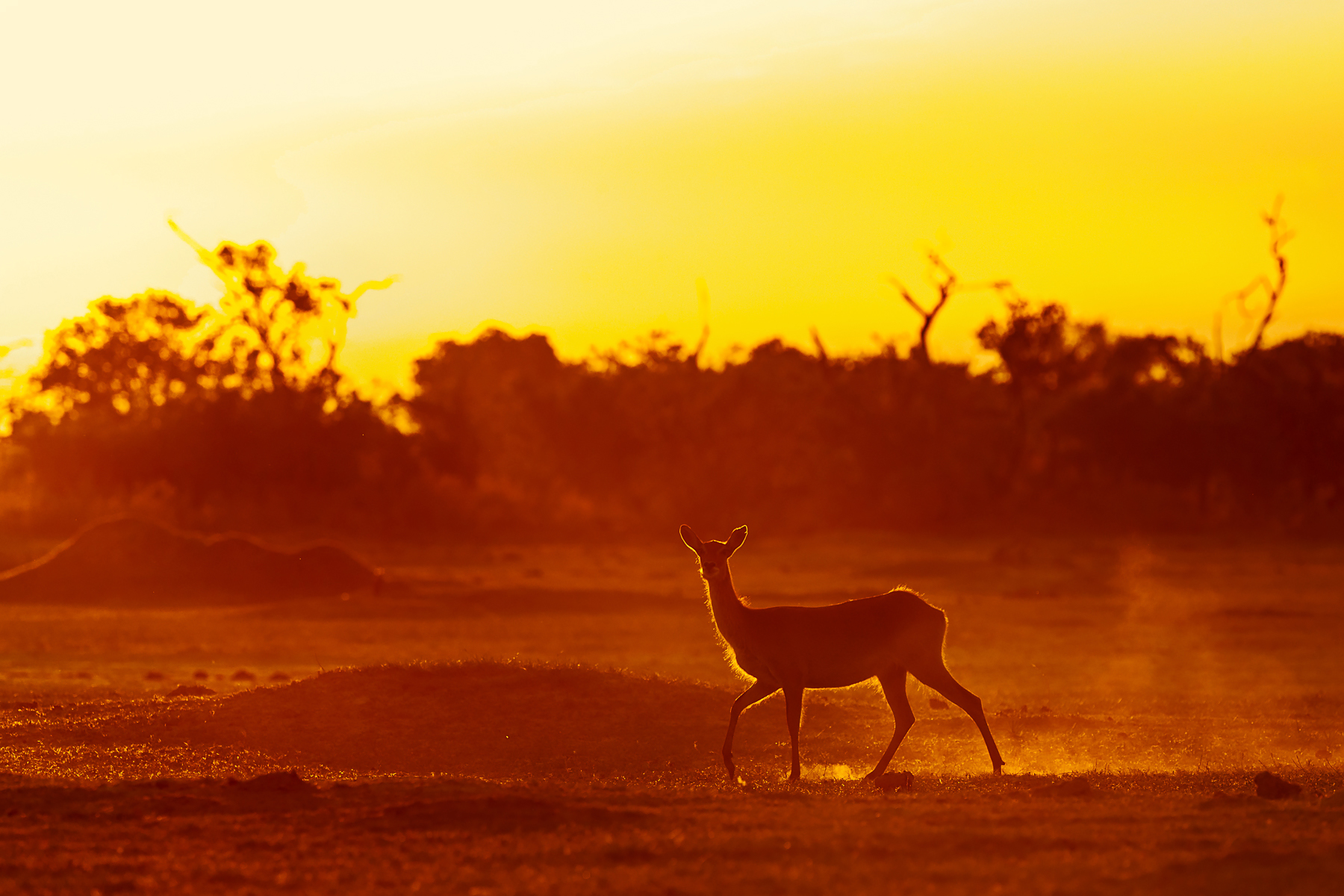
Red Lechwe silhouetted by a Moremi sunset (Image by Wim Vorster)

An African Fish Eagle takes off from a dead Leadwood tree in Chobe (Image by Wim Vorster)

Portrait of a beautiful African Wild Dog (Image by Wim Vorster)

Cute little elephant babies try to keep up with the herd (Image by Wim Vorster)

Plains zebras often play and fight with each other (Image by Wim Vorster)

A sweet little Baby Chacma baboon in Chobe (Image by Wim Vorster)

Two male lions at dusk in Savute (Image by Wim Vorster)
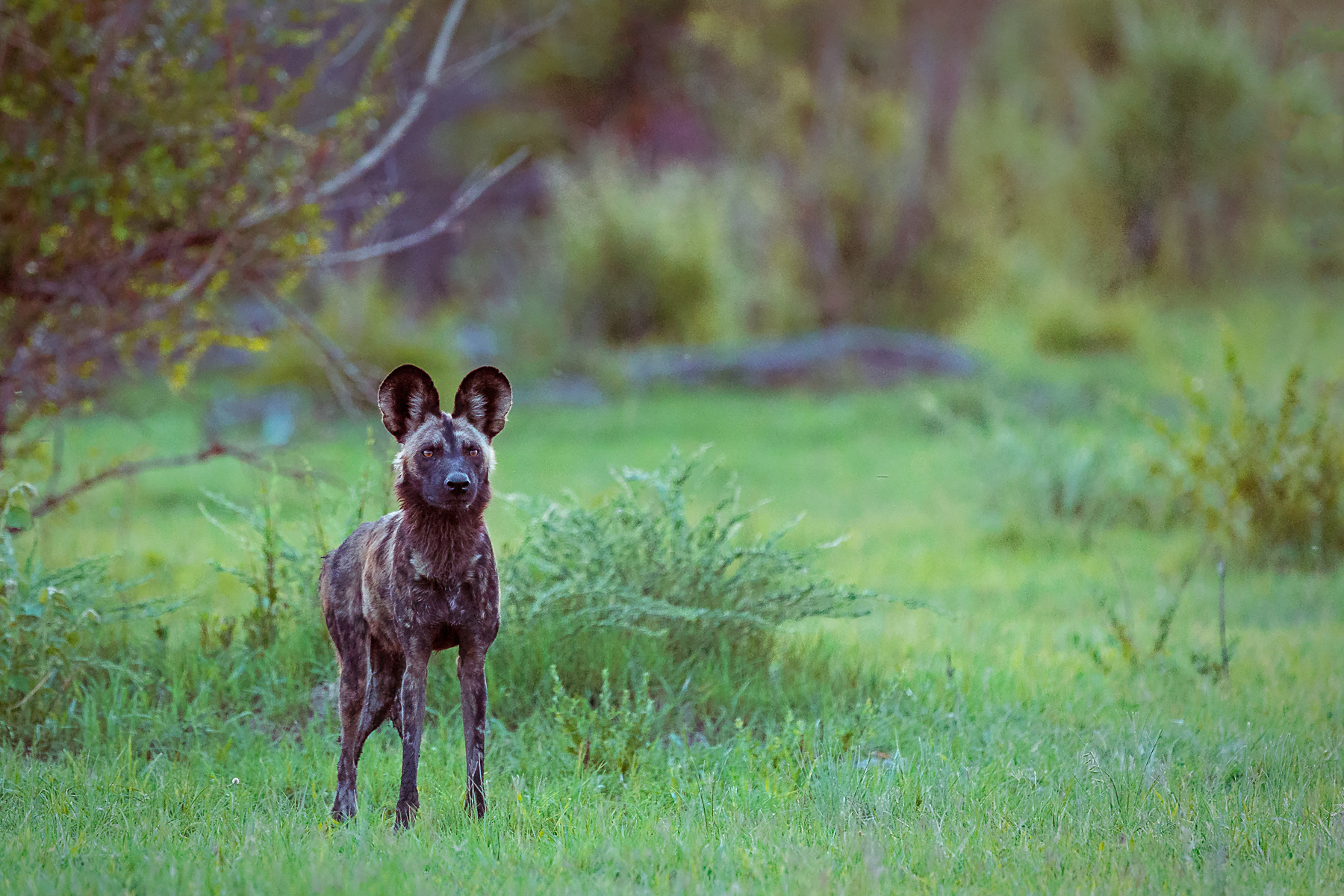
A male African Wild Dog watches for prey in Khwai (Image by Wim Vorster)

A Red-billed oxpecker searches for mites and ticks on the neck of a Giraffe (Image by Wim Vorster)
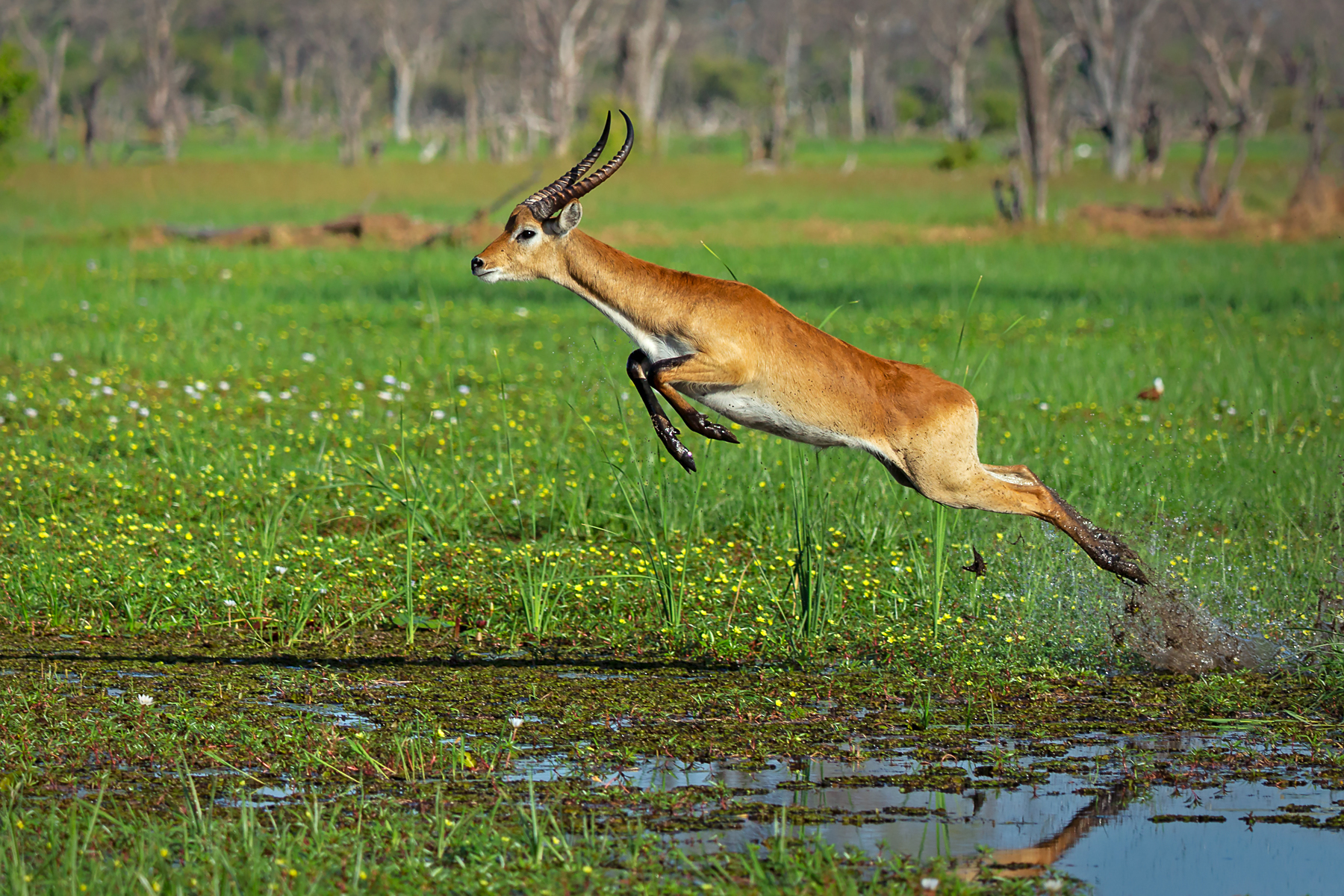
Red Lechwe leaping across a Khwai water channel (Image by Wim Vorster)
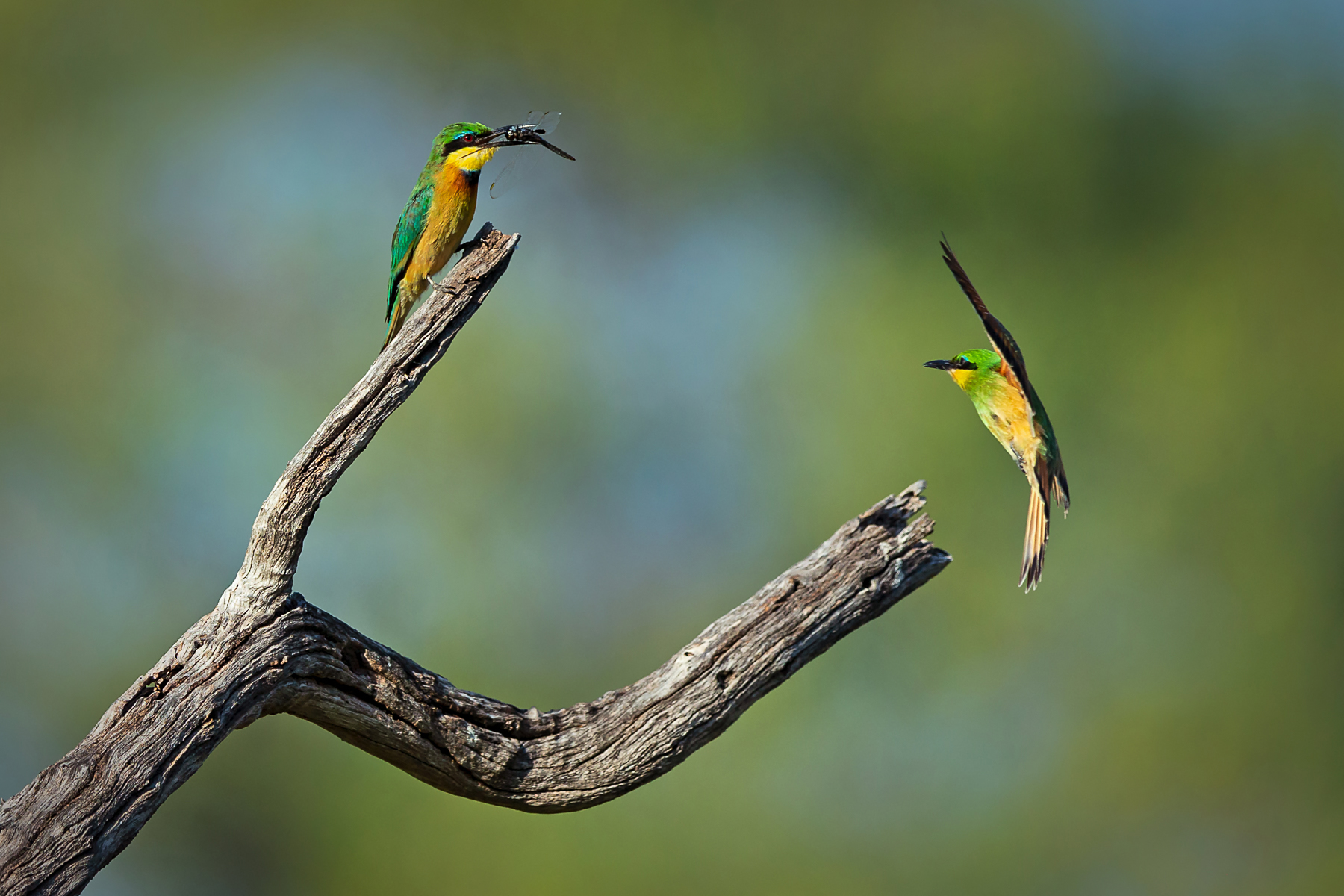
A Little bee-eater feeds a dragonfly to its chick (Image by Wim Vorster)

Male baboon on the look out for danger in Chobe (Image by Wim Vorster)
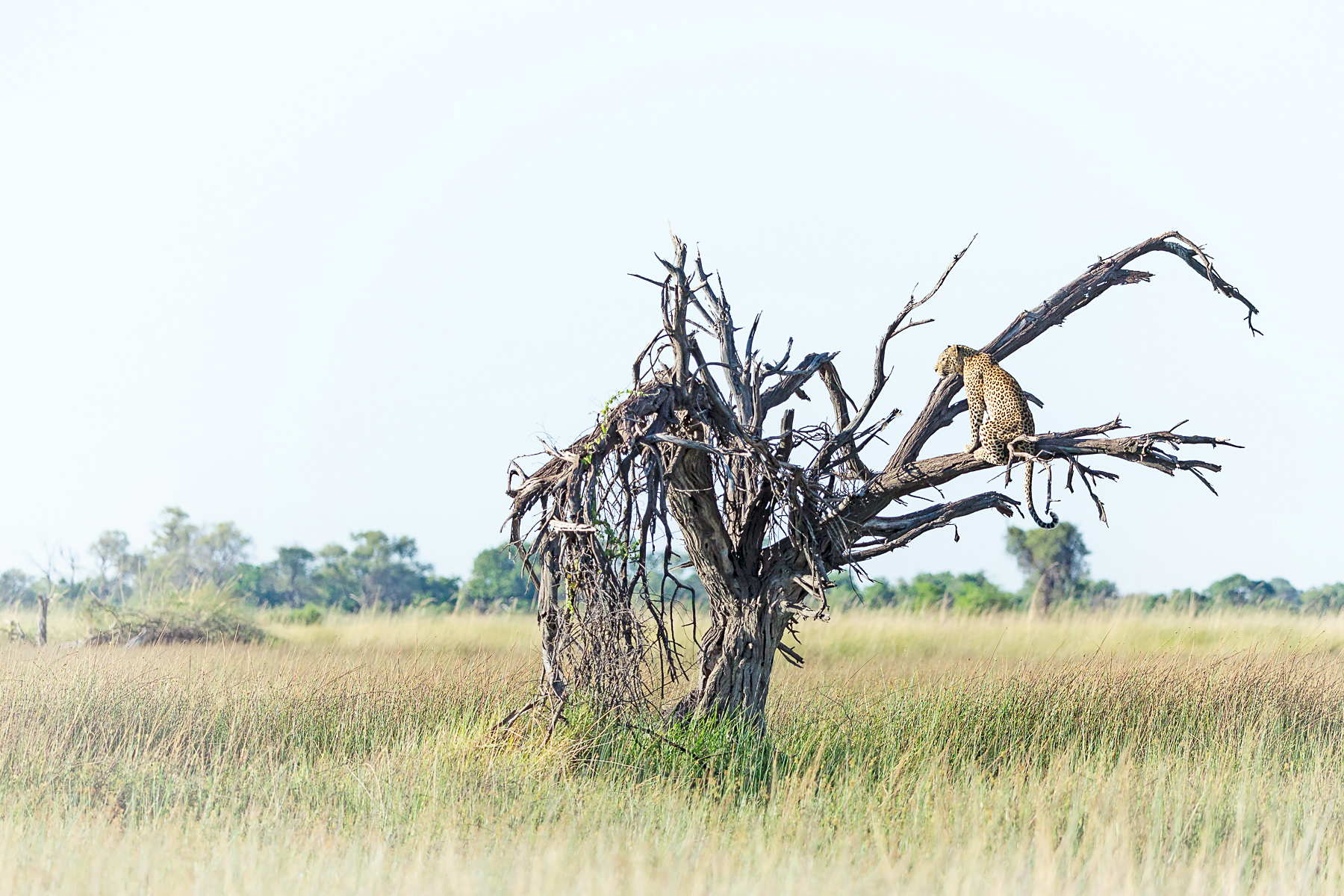
A stunning male leopard in dead tree (Image by Wim Vorster)
We had a great, short flight on SA Airlink from Johannesburg to Maun, the small tourist town located just south of the world renowned Okavango Delta. We quickly realized when we circled the Maun airstrip, before landing, that northern Botswana has not received a lot of rain. Both rivers, the Boro and Thamalakane, flowing through the small town were bone dry! Unusual for this time of year.
A Thamalakane River Lodge representative collected us from the airport and he drove us to the Lodge where we would spend our first night. The lodge is beautifully situated next to the Thamalakane River, and although there was no water in the river, the gardens were still green and lush and filled with lovely Bushveld birds. We enjoyed refreshing sundowners whilst watching the sun setting over the African bush and ended the evening with a delightful dinner.
Shaka, our local guide and driver for the rest of the safari, collected us at 8am the first morning and we embarked on our open safari vehicle towards Moremi Game Reserve. Let the adventure begin!
The journey to Moremi’s South Gate was pleasant and even got better when we started seeing classic African wildlife like impala, plains zebra, giraffe and even a herd of elephants mud-bathing before we reached the park’s boundary. Got to love Botswana!
We stopped for a well-deserved lunch break at South Gate where after we continued to our campsite in the Xakanaxa area of Moremi.
The three members of our camp crew worked very hard to have everything ready before our arrival. The tents all looked great with beds and linen, a complete en-suite bathroom area with a shower and toilet, all open under the African sky. We had a big dining tent where all our fantastic bush cuisine was served, the meals were top notch and difficult to believe that Alex, our chef, prepared it all in the middle of nowhere on an open fire!
Moremi is a wilderness paradise with fantastic landscapes and beautiful large trees growing next to watercourses and floodplains.
The birdlife is fantastic and we decided to start a “bird species count” for our whole 12-day safari.
We spent three days traversing the winding two-tracks of the Moremi landscape in search of any reptile, bird or mammal to photograph. We had lovely sightings of big herds of Red Lechwe on the floodplains, Plains Zebra, various herds of impala ewes with their newborn lambs (they usually give birth after the first decent rain in November), pods of hippo and an elephant herd with very young calves.
A real bonus in Moremi was to see and spend time with a pack of endangered African Wild Dogs (aka Painted Wolves). The 15 strong pack consisted of 9 adults with six 6 month old pups. The pups started running around and playing in the tall grass shortly after we found them. The late afternoon golden light was beautiful and images captured fantastic. We all enjoyed their company until sunset when we had to return to our campsite for a drink around the campfire before dinner.
We found a big male leopard relaxing on a dead tree overlooking a floodplain on the second morning. He eventually climbed down; walked right pass our photo vehicle into a thicket where he then relaxed on the green grass and in the cool shade for the day.
We also went on a surprise boat cruise one afternoon, exploring some of the Okavango waterways. We photographed two bull elephants feeding in the water next to the boat, as well as a large variety of water birds that, because of the silent mode of travel, we managed to get extremely close to.
Birds were conspicuous in Moremi and we had great photographic encounters including beautiful monogamous pairs of Saddle-billed storks, endangered Wattled Cranes, noisy Swainson’s Spurfowl, elegant Long-toed Lapwings and handsome Double-banded Sandgrouse. Herons and egrets were well represented and we had lovely sightings of Western Great Egret, Yellow-billed Egrets, Little Egrets, Grey Herons, Purple Herons, Squacco Herons, Black Herons (that forms a shady umbrella with its wings so that it can see better to fish), and the ultimate prize of the Okavango, the rare Slaty Egret.
The last morning in Moremi we spent time at a Masked Weaver colony and witnessed, and photographed, how these beautiful yellow birds build their grass woven nests. We were also surprised by a guest appearance of an Osprey, not a common bird to see in southern Africa.
We continued our journey further northeast to the Khwai area and arrived at camp late afternoon. I just love spending time in Khwai as I have fond memories of fantastic sightings in the past. Khwai, as usual, did not disappoint…. we had fantastic sightings of elephants swimming in the river (aka “pool party”), hippos relaxing in the river, leaping lechwe, grazing zebra, foraging giraffe, playful chacma baboons, a pregnant lioness feeding on a buffalo carcass, a family of Spotted Hyenas at their underground den and another wonderful encounter of African Wild Dogs on the hunt. We started seeing more-and-more impala lambs as the safari continued, and unfortunately for them, they’re on all of the predator’s menus.
Our birds count also continued climbing and all of us successfully photographed Lilac-breasted Rollers, Yellow-billed Kites and Little Bee-eaters in flight. Water birds were also plenty in-and-around the water and we added Yellow-billed Storks, Grey Herons, Black-winged Stilts, Egyptian Geese, Malachite and Pied Kingfishers, African Jacanas and Sacred Ibis to our photographed list.
We started off early on our third morning in Khwai with another lovely game drive before continuing on our 4 hour journey further northeast to the well known Savute, land of the ‘Marsh Pride’. There are no tarmac roads in this part of Botswana, only dirt and sand roads all the way, and we had to keep our eyes open, as there are no fences keeping the wild animals in-or-out! We stopped at the Mababe gate, one of the official entrance gates to the National Park, for a leg stretch, toilet stop and coffee break. To reach Savute we had to drive through the Mababe depression section of the park and what a sight it was, a massive herd of Cape buffalo in the distance with at least a hundred elephants moving around us feeding, drinking and mud bathing close to the rain filled pans. To my relief I realized that, unlike Maun, it did rain here a few days earlier.
It was great to be back in Savute seeing the Savute marsh, kopjes and sand ridge again…. What a special place. We arrived at our fantastic campsite, situated on the bank of the dry Savute channel, in the afternoon and we all enjoyed settling in to our new home for the next three days. The bucket shower is always a pleasant sight after a long & dusty journey. We all jumped into the vehicle and explored the area around camp for the last two hours of daylight and were lucky enough to find x3 beautiful big male lions relaxing right next to the road. I knew that they would get active shortly before sunset and we patiently waited for the first yawn. A lot of yawning followed and it was definitely worth the wait.
It rained two out of the three nights while we were in Savute and that gave our morning game drives a breath of fresh air. The Savute channel and Savute marsh has been dry (except for the period between 2008 – 2013) for the last 35 years. The Botswana wildlife department constructed artificial waterholes some time ago and they are always worthwhile visiting, as water is a scarce resource in this part of the world.
We had great sightings and photo opportunities in Savute of plains zebra, blue wildebeest and Tsessebe on the marsh. The northern pride of lions currently has 9 small cubs, as well as the Marsh pride with x5 older cubs. Early one morning, after an impressive rainstorm the night before, whilst scratching around for one of the territorial female leopards, we had a brief glimpse of two of Africa’s most secretive animals… a honey badger on the move and an aardvark doing burrow maintenance. Fantastic!
The birdlife in Savute also didn’t disappoint and our total species count for the trip so far was just over 120! We saw and photographed Kori Bustards, (Botswana’s national bird), Red-crested korhaan, Northern Black korhaan, Lappet-faced and Hooded Vultures, Martial Eagle, Tawny Eagle, Pallid Harriers, European Bee-eaters, Carmine Bee-eaters, Little Bee-eaters as well as Rufous-naped Larks…. just to name a few.
Our last long journey from Savute to the Chobe National Park’s waterfront was ahead of us, and after another lovely morning game drive in Savute, we started our trip further northeast. It was overcast with beautiful blue rain clouds all around, which helped to cool things down along the way. We stopped at Savute’s Ghoha gate to stretch our legs and have a coffee and tea break. A beautiful Red-headed weaver male was busy building his nest and we moved a bit closer to observe him in action. We were all waiting, cameras in hand, for him to return to his untidy nest hanging from the tree to get another lovely bird photograph for our collection.
We arrived safely mid afternoon at our campsite in Chobe National Park, which was situated between beautiful big trees. We could clearly see that it did rain more here than our previous destinations as the bush was lush & green.
We did three photographic drives next to the Chobe River and had fantastic sightings and photo opportunities of large herds of impalas with their lambs, red lechwes, kudus, giraffe, steenbok and troops of baboons. Our bird list continued to grow and we had unbelievable sightings of monogamous pairs of African Fish Eagles and managed to photograph them perched, calling together and in flight! The Chobe is also one of the Carmine bee-eaters breeding hotspots and we photographed adults and juveniles hunting flying insects on the wing. To my surprise we also had another lovely sighting of an osprey. On our last afternoon safari we spent time with a big troop of baboons with a lot of baby baboons entertaining us as well as a lioness feeding on her kudu kill.
The last morning of our Botswana photo safari was spent on a small boat exploring the Chobe River for four hours. We had a fantastic skipper and local guide that took us to all the best photo locations and our bird list ended on an exciting 152 species for the 12 days. We photographed more kingfishers, herons, fish eagles, lapwings, darters, gulls, sandpipers, thick-knees, ducks and cormorants. We managed to get right next to a herd of elephants, with two really small calves, drinking from the river, as well as a pod of hippo grazing on the short green grass on the shore.
A personal highlight of the boat cruise was seeing more than 50 Nile Crocodiles gathering to feed on a dead hippo.
It was fantastic hosting the Botswana Wildlife Spectacular photo safari and spending time, and sharing my love for photography and the African bush, in four of Botswana’s untouched wildlife hotspots. All of us had a great time and I’m looking forward to hosting the next Botswana Photo Safari in November 2020!

















































